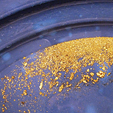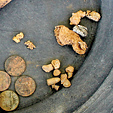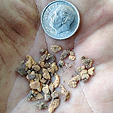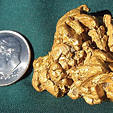Prospecting & Detecting
All About Quartz—Part I
May 2013 by Chris Ralph
One of the first minerals most prospectors learn to recognize is quartz, because, in the right circumstances, it can be an excellent indicator mineral for prospectors. Quartz is common, easy to identify, and is often associated with gold and other valuable metal deposits.The Joys of Desert Prospecting
 …since many miners have wandered these hills over the years, you have to sometimes be a little more creative and unconventional in your methods to hopefully find new deposits.
…since many miners have wandered these hills over the years, you have to sometimes be a little more creative and unconventional in your methods to hopefully find new deposits.
All About Quartz—Part I
One of the first minerals most prospectors learn to recognize is quartz, because, in the right circumstances, it can be an excellent indicator mineral for prospectors. Quartz is common, easy to identify, and is often associated with gold and other valuable metal deposits.
Achieving Accurate Metal Detector Discrimination
 Your odds of going home with gold will be higher using the discrimination mode, even if you might have misread one of the targets you rejected.
Your odds of going home with gold will be higher using the discrimination mode, even if you might have misread one of the targets you rejected.
Treasure Hunters Challenge FBI Over Dig for Civil War Gold
The father-son duo spent years combing this bit of Pennsylvania wilderness with high-end metal detectors, drills and other tools to prospect for a fabled cache of Civil War gold.
Piles of Gold
 These gritty clay lines were only a quarter of an inch up to three inches wide. Once the line had been laid out, they would look at the wall of gritty clay material and seek more indicators.
These gritty clay lines were only a quarter of an inch up to three inches wide. Once the line had been laid out, they would look at the wall of gritty clay material and seek more indicators.
Hit the Slopes to Find More Gold
 Watching for these areas is one of my primary targets during the winter. It doesn’t take but a few inches of the surface moving away to give a fantastic target response that you didn’t hear prior to the washing of the surface.
Watching for these areas is one of my primary targets during the winter. It doesn’t take but a few inches of the surface moving away to give a fantastic target response that you didn’t hear prior to the washing of the surface.
Subscription Required:
The Bawl Mill
• Gold Rush in the Congo
• Find of a Lifetime
• Over the Divide
• Your Guide to Prospecting in Alaska
• Shallow Water Crevicing Can Bring Big Rewards
• A Father and Son Prospecting Adventure
• Home Office Deductions
• Advantages of Modern Prospectors
• Searchers' Dreams
• Gold in Unlikely Places
• Melman on Gold & Silver
• Mining Stock Quotes and Mineral & Metal Prices
Free:
Legislative and Regulatory Update
• Angkor Gold's Cambodia Projects
• Contact Information for Oregon Senators







